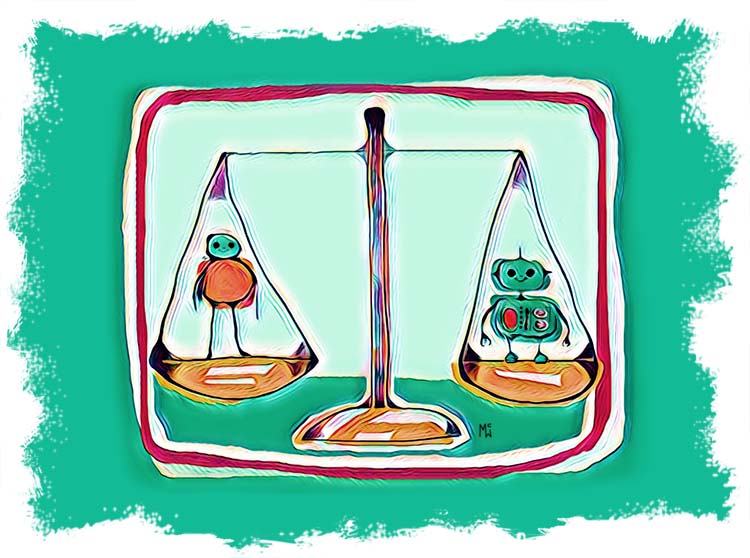Yes, we’ve heard. The Robots are coming. They’re here, actually. Artificial intelligence has spread its electronic tentacles into every industry imaginable. A.I. has become the trending buzz phrase, especially in the recruitment industry. It seems though, that some recruiters are genuinely scared of the thought, feeling unsure if their jobs are at risk.
Ultimately, the question on every recruiter’s mind is, “will the robots take my job or will they make me more commission?” In a people-oriented industry like recruiting and staffing, there will always be the need for human interaction. While realistically, intelligent automation technologies may make the process of finding a job more efficient, automating the more mundane parts of the process, human recruiters will always be required for the most important interpersonal phases of the recruitment process: Persuading candidates and hiring managers that they are right for each other, the one-on-one interview and the ultimate hiring decision. Essentially the less time a recruiter needs to spend on the mundane aspects of the job, the more time he or she has for closing hires and earning commission.
So how can humans and intelligent technologies best work together in recruitment? The answer, it would seem, is that each should work at the parts of the process where they are strongest and the other is weakest. So where is A.I. at its weakest? And where are we humans at our strongest?
In a recent article on making your company machine-learning ready, James Hodson, CEO of the AI for Good Foundation, Chairman of the Financial Data Science Association, offers a good definition of A.I. and points out that its weakness is that it doesn’t have the understanding to make regular decisions like humans routinely do.
“When people talk about AI, machine learning, automation, big data, cognitive computing, or deep learning, they’re talking about the ability of machines to learn to fulfill objectives based on data and reasoning. This is tremendously important, and is already changing business in practically every industry. In spite of all the bold claims, there remain several core problems at the heart of Artificial Intelligence where little progress has been made (including learning by analogy, and natural language understanding). Machine learning isn’t magic, and the truth is we have neither the data nor the understanding necessary to build machines that make routine decisions as well as human beings.”
While A.I. is strong at inferring generalizations where we have vast quantities of data, one of A.I.’s inadequacies, and our strengths, is our ability to actually understand other human beings and relate to them – and act – appropriately. For example, a computer might be able to make a set of suggestions for matches which look good on paper, but it takes a human to understand the actual needs of the hiring manager and the candidate enough to be able to persuade each that they are a good fit for the other.
So, as much as we rely on machine learning and A.I. technology to work for us, it relies on humans for instruction and operation. And even then, is incapable of many tasks only a human can complete.
Recruiters utilizing and working in tandem with technology is reality. Finding the balance is key.
Recruiters’ roles will shift to more of what humans do best — talking to clients and candidates, getting a feel for who would make the best match, and of course, persuading each that the other is their ideal partner. The A.I. technology will be the tireless recruitment tool — or team member, used for mundane repetitive tasks, and able to complete them with more efficiency and energy than a human ever had. For instance, we at DaXtra refer to our DaXtra Capture as a “robotic administrator.” Wouldn’t we ALL like a robotic administrator to sort, organize, rank and file? DaXtra Search, on the other hand, uses more complex A.I. and by searching, intuitively filtering and sorting data from job boards, online networking sites and CRM databases, DaXtra’s resume search software quickly finds the most relevant candidates using natural language semantic meta-search technology, more quickly and efficiently than a human ever could.
Working in tandem, with the artificial intelligence at your fingertips, puts you on a whole new level: Mere mortals — and especially your competitors — can’t compete!
The realization is that man and machine working together is the key, and therein lies the answer. In an article produced on behalf of Deloitte (by Quartz Creative), this quote struck a chord —
“Success, it turned out, lay not in man or machine alone, but in the hands of individuals who best knew how to optimize the abilities of technology towards a desired end.”
The quote maps over to many fields, recruiting and staffing among them. The better you know how to give direction, instruct, code or use the technology at your disposal, the more of an advantage you have.
Finding a balance between man and machine is important. Invest and take advantage of the best recruitment technology available. Recruiters should learn it and arm themselves with the knowledge of how to best use it. Working in tandem with A.I., recruitment technology gives you the benefit of having the upper hand when it comes to staying ahead of the pack and taking advantage of practical, cost-effective efficiencies.
By M.Christine Watson, Global Marketing Director, Daxtra Technologies
For a demo on our specific products:
Learn more


